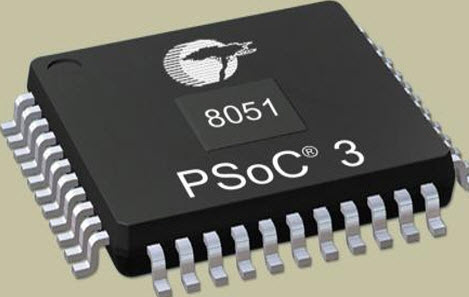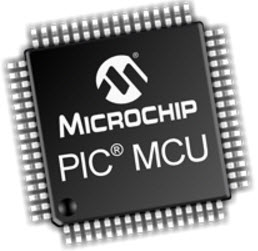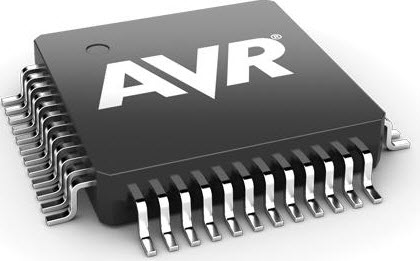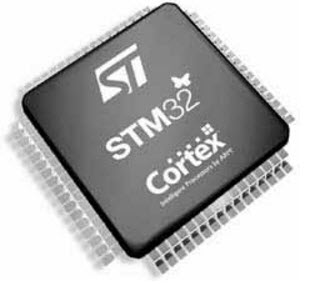Nowadays, Microcontrollers are so cheap
and simply obtainable that it is general to use them instead of easy
logic circuits like counters for the sole reason of gaining some design
flexibility and discount some space. Some machines and robots will even
rely on a huge number of microcontrollers,
each one enthusiastic to a confident task. Mainly fresh
microcontrollers are ‘In System Programmable’ it means that you can be
adjusting the program being executed, without removing the
Microcontroller from its position. In this article we are discussing
about the difference between AVR, ARM, 8051 and PIC Microcontrollers.
Difference between AVR, ARM, 8051 and PIC Microcontrollers
The differences between the
microcontrollers are mainly include what is a microcontroller,
difference between AVR, ARM, 8051 and PIC microcontrollers and its
applications.
What is a Microcontroller?
A micro-controller can be comparable to a
little stand alone computer; it is an extremely powerful device, which
is able of executing a series of pre-programmed tasks and interacting
with extra hardware devices. Being packed in a tiny integrated circuit
(IC) whose size and weight is regularly negligible, it is becoming the
perfect controller for as robots or any machines required some type of
intelligent automation. A single microcontroller can be enough to manage
a small mobile robot, an automatic washer machine or a security system.
Several microcontrollers contains a memory to store the program to be
executed, and a lot of input/output lines that can be a used to act
jointly with other devices, like reading the state of a sensor or
controlling a motor.
8051 Microcontroller
8051 microcontroller
is an 8-bit family of microcontroller is developed by the Intel in the
year 1981. This is one of the popular families of microcontroller are
being used all across the world. This microcontroller was moreover
referred as “system on a chip” since it has 128 bytes of RAM, 4Kbytes of
a ROM, 2 Timers, 1 Serial port, and 4 ports on a single chip. The CPU
can also work for 8bits of data at a time since 8051 is an 8-bit
processor. In case the data is bigger than 8 bits, then it has to be
broken into parts so that the CPU can process easily. Most manufacturers
contain put 4Kbytes of ROM even though the number of ROM can be
exceeded up to 64 K bytes.

8051 Microcontroller
The 8051 has been in utilized in a wide
number of devices, mostly because it is easy to integrate into a project
or make a device approximately. The following are the major areas of
focus:
Energy Management:
Efficient metering systems facilitate in controlling energy usage in
homes and manufacturing applications. These metering systems are
prepared capable by incorporating microcontrollers.
Touch screens: A high
number of microcontroller providers incorporate touch-sensing
capabilities in their designs. Portable electronics such as cell phones,
media players and gaming devices are examples of microcontroller-based
touch screens.
Automobiles: The 8051
finds wide taking in providing automobile solutions. They are broadly
used in hybrid vehicles to handle engine variants. Furthermore,
functions such as cruise control and anti-brake system have been
prepared more capable with the use of microcontrollers.
Medical Devices:
Moveable medical devices such as blood pressure and glucose monitors use
microcontrollers will to show data, thus provided that higher
reliability in providing medical results.
PIC Microcontroller
Peripheral Interface Controller (PIC) is microcontroller developed by a Microchip, PIC microcontroller is
fast and simple to implement program when we contrast other
microcontrollers like 8051. The ease of programming and simple to
interfacing with other peripherals PIC become successful
microcontroller.

PIC Microcontroller
We know that microcontroller is an integrated chip which is consists of RAM, ROM, CPU, TIMER and COUNTERS. The PIC is a microcontroller which as well consists of RAM, ROM, CPU, timer, counter, ADC (analog to digital converters),
DAC (digital to analog converter). PIC Microcontroller also support the
protocols like CAN, SPI, UART for an interfacing with additional
peripherals. PIC mostly used to modify Harvard architecture and also
supports RISC (Reduced Instruction Set Computer)
by the above requirement RISC and Harvard we can simply that PIC is
faster than the 8051 based controllers which is prepared up of
Von-Newman architecture.
AVR Microcontroller
AVR microcontroller
was developed in the year of 1996 by Atmel Corporation. The structural
design of AVR was developed by the Alf-Egil Bogen and Vegard Wollan. AVR
derives its name from its developers and stands for Alf-Egil Bogen
Vegard Wollan RISC microcontroller, also known as Advanced Virtual RISC.
The AT90S8515 was the initial microcontroller which was based on the
AVR architecture, though the first microcontroller to hit the commercial
market was AT90S1200 in the year 1997.

AVR Microocntroller
AVR Microcontrollers are Available in three Categories
TinyAVR:- Less memory, small size, appropriate just for simpler applications
MegaAVR:- These are the
mainly popular ones having a good quantity of memory (up to 256 KB),
higher number of inbuilt peripherals and appropriate for modest to
complex applications.
XmegaAVR:- Used in commercial for complex applications, which need large program memory and high speed.
ARM Processor
An ARM processor
is also one of a family of CPUs based on the RISC (reduced instruction
set computer) architecture developed by Advanced RISC Machines (ARM).

ARM Microcontroller
An ARM makes at 32-bit and 64-bit RISC
multi-core processors. RISC processors are designed to perform a smaller
number of types of computer instructions so that they can operate at a
higher speed, performing extra millions of instructions per second
(MIPS). By stripping out unnecessary instructions and optimizing
pathways, RISC processors give outstanding performance at a part of the
power demand of CISC (complex instruction set computing) procedure.
ARM processors are widely used in
customer electronic devices such as smart phones, tablets, multimedia
players and other mobile devices, such as wearables. Because of their
reduced to instruction set, they need fewer transistors, which enable a
smaller die size of the integrated circuitry
(IC). The ARM processors, smaller size reduced difficulty and lower
power expenditure makes them suitable for increasingly miniaturized
devices.
Main Difference between AVR, ARM, 8051 and PIC Microcontrollers
|
8051
|
PIC
|
AVR
|
ARM
|
|
|
Bus width
|
8-bit for standard core | 8/16/32-bit | 8/32-bit | 32-bit mostly also available in 64-bit |
|
Communication Protocols
|
UART, USART,SPI,I2C | PIC, UART, USART, LIN, CAN, Ethernet, SPI, I2S | UART, USART, SPI, I2C, (special purpose AVR support CAN, USB, Ethernet) |
UART, USART, LIN, I2C, SPI, CAN, USB, Ethernet, I2S, DSP, SAI (serial audio interface), IrDA
|
|
Speed
|
12 Clock/instruction cycle | 4 Clock/instruction cycle | 1 clock/ instruction cycle | 1 clock/ instruction cycle |
|
Memory
|
ROM, SRAM, FLASH | SRAM, FLASH | Flash, SRAM, EEPROM | Flash, SDRAM, EEPROM |
|
ISA
|
CLSC |
Some feature of RISC
|
RISC | RISC |
|
Memory Architecture
|
Von Neumann architecture | Harvard architecture | Modified | Modified Harvard architecture |
|
Power Consumption
|
Average | Low | Low | Low |
|
Families
|
8051 variants | PIC16,PIC17, PIC18, PIC24, PIC32 | Tiny, Atmega, Xmega, special purpose AVR | ARMv4,5,6,7 and series |
|
Community
|
Vast | Very Good | Very Good | Vast |
|
Manufacturer
|
NXP, Atmel, Silicon Labs, Dallas, Cyprus, Infineon, etc. | Microchip Average | Atmel | Apple, Nvidia, Qualcomm, Samsung Electronics, and TI etc. |
| Cost (as compared to features provide) | Very Low | Average | Average | Low |
|
Other Feature
|
Known for its Standard | Cheap | Cheap, effective | High speed operation Vast |
|
Popular Microcontrollers
|
AT89C51, P89v51, etc. | PIC18fXX8, PIC16f88X, PIC32MXX | Atmega8, 16, 32, Arduino Community | LPC2148, ARM Cortex-M0 to ARM Cortex-M7, etc. |
Thus, this is all about the difference
between AVR, ARM, 8051 and PIC microcontrollers. We hope that you have
got a better understanding of this concept. Furthermore, any queries
regarding this concept or electronics and electrical projects, please give your valuable suggestions by comment in the comment section below. Here is a question for you, what are the applications of AVR and ARM?






No comments:
Post a Comment